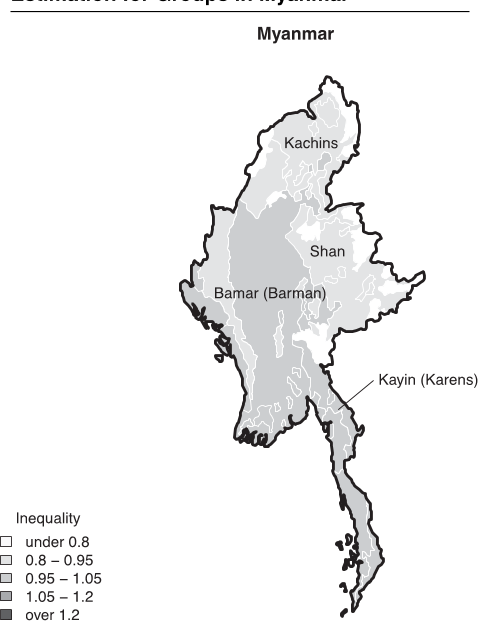




Did you find this useful? Give us your feedback












[...]
1,412 citations
456 citations
397 citations
385 citations
...…in and importance of economic privileges between individuals and groups, thus raising levels of dissatisfaction and grievances to the extent that it could spur violent reactions (Brennan-Galvin, 2002; Gizewski and Homer-Dixon, 1995; see Cederman et al., 2011; Østby, 2008 for empirical research)....
[...]
14,106 citations
5,994 citations
5,349 citations
4,833 citations
4,603 citations
Although there is plenty of room for further data refinement in future research, the authors believe that the results presented in this article are both of considerable theoretical importance and of direct policy relevance. Although survey-based information has limited scope, it could be used to extend and validate their measurements ( see Baldwin and Huber 2010 ). Although such explanations have partly fallen out of favor in recent civil war research, this finding will hopefully contribute to convincing scholars of civil war that the frustrations driving ethnonationalist mobilization and violence can not be separated easily from economic factors. Although their proposed causal mechanisms are potentially capable of closing this explanatory gap, the authors can not provide direct evidence of their operation in this article.
There may exist a relationship between inequality and popular revolutions or class conflict, which is another reason to consider disaggregating the cases of civil war.
Fine-grained temporal measurements could also help developing an explicitly endogenous account of HIs, which have been kept exogenous in this study.
Because formidable problems of data availability associated with the uneven coverage and comparability of surveys have stood in the way of assessing such “horizontal inequalities” (HIs), most scholars have had to content themselves with selective case studies or statistical samples restricted to particular world regions.
Their spatial method becomes unreliable for small population sizes, primarily because of the low resolution of the G-Econ data and the limited precision of the population estimates for tiny groups.
For a full sample of rebel groups and their conflict involvement, the authors rely on the Non-State Actors dataset (Cunningham, Gleditsch, and Salehyan 2009) that identifies the fighting organizations involved in civil wars (according to the Uppsala/PRIO Armed Conflicts Data, see Gleditsch et al. 2002).
To test the hypotheses, the authors then introduce the datasets and describe their spatial method of wealth estimation in detail, including how to use the contours of the ethnic groups’ settlement areas as “cookie cutters,” which allows us to extract the relevant wealth estimates from the spatial wealth map.
In fact, the only broadly available cross-national data source on variation in wealth within countries is the G-Econ data, developed by Nordhaus (2006; see also Nordhaus and Chen 2009).
concluding at least tentatively that both economic and political inequality at the group level increase the risk of ethnonationalist civil war, the authors argue that the civil war literature’s tendency to downplay the importance of grievances as a source of internal conflict is both premature and misguided.
6Before grievances can be acted upon, they need to be cognitively linked to social identities through selfcategorization (Hogg and Abrams 1988, 21).
A more promising way to capture the link between uneven wealth distributions and conflict has been proposed by Stewart (2008b) and her colleagues, who1 In more recent research, Collier, Hoeffler, and Rohner (2009) maintain that civil wars are caused by factors associated with “feasibility” rather than by grievances and other types of motivations.
26 Consequently, the group-size restriction almost triples the inequality coefficient reported in Model 2 without affecting the size of the standard error.